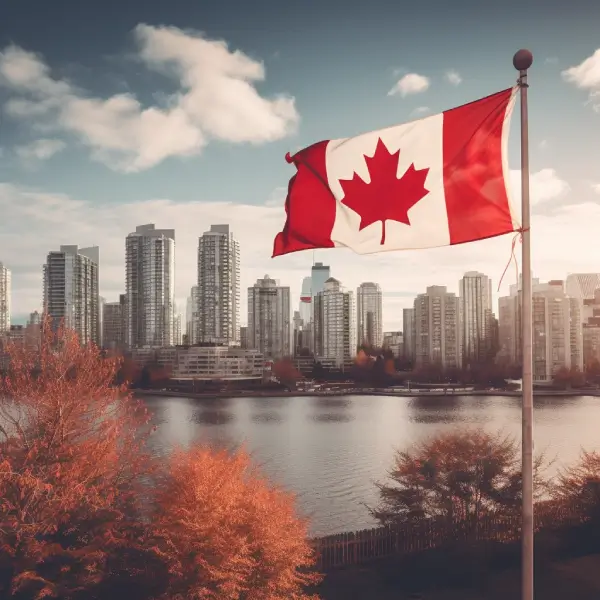A Comprehensive Guide to Traveling to Canada for U.S. Green Card Holders

U.S. green card holders, or permanent residents, often have many questions about international travel, especially when it involves our friendly neighbor to the north, Canada. This guide delves deep into what you need to know about venturing into Canadian territory.
What Does Being a U.S. Green Card Holder Mean for Travel?
When you possess a U.S. green card, you’ve secured permanent resident status in the United States. This distinction not only simplifies your re-entry into the U.S. but also eases international travel, specifically to countries with which the U.S. has established relations, like Canada. While you can typically enter Canada without a visa, your travel mode and purpose might entail additional paperwork. It’s crucial to note that while road trips might offer ease of access, air journeys often present stricter documentation requirements.
The United States and Canada: A Unique and Strong Bond
One cannot discuss U.S.-Canada travel without acknowledging the profound relationship between these two nations. With the world’s longest international border as a testament, these countries also boast a daily goods and services exchange of an astounding $1.8 billion. Moreover, roughly 380,000 individuals cross between the U.S. and Canada daily, symbolizing an enduring mutual reliance.
This exceptional rapport has laid the foundation for unique immigration policies benefiting both Canadian and U.S. nationals and permanent residents. But, for green card holders specifically, having authentic travel documents like your green card and passport remains essential for border crossing.
Setting Foot in Canada: Over Land or By Sea
If you’re drawn to scenic drives or the lure of sea routes, you’ll be pleased to know that your U.S. permanent resident status considerably eases entry into Canada. All that’s typically needed is proof of such status, commonly your green card. The absence of mandatory travel visas or any need to be part of designated tour groups makes these travel avenues highly attractive and relatively uncomplicated. These modes offer a glimpse of the broader freedoms that come with full citizenship, emphasizing the value of a green card.
Soaring Through the Skies: A More Detailed Process
Should you decide to reach Canada by air, be prepared for a bit more paperwork. The first hurdle to address is the universal need for a valid passport for international air travel. Your green card won’t replace this requirement. Until you’ve undergone the naturalization process and acquired U.S. citizenship, you must present a valid passport from your native country for such air travel endeavors.
There’s one more hoop to jump through: obtaining an Electronic Travel Authorization (eTA) from the Canadian government. This document is paramount for all visa-exempt foreign nationals flying into Canada.
Understanding the eTA: A Crucial Component of Air Travel
The eTA is an innovative solution for speeding up the travel process for visa-exempt foreign nationals. Electronically connected to your passport, it typically remains valid for up to five years or until your passport expires. An eTA doesn’t just benefit a one-time traveler; it allows for recurrent entries into Canada, extending each stay to six months.
Applying for an eTA is a streamlined online process, demanding a minimal CAD 7 fee, and requires you to provide your passport details, an email address, and a payment method. But remember, possessing an eTA doesn’t automatically guarantee your entry. At the Canadian border, expect to showcase your green card and passport and answer pertinent questions from border officials.
Accuracy Matters: Avoiding eTA Pitfalls
It’s a simple but crucial piece of advice: double-check the information you provide on your eTA form. A prevalent mistake, for example, misreporting your passport number, can render your document invalid, leading to a denied entry. It’s paramount to verify each detail, especially the number found on your passport’s primary information page.
Stay Updated: Utilizing Valuable Resources
Before setting out, tap into resources like the Canadian government’s ArriveCAN app and website. This platform keeps you abreast of travel prerequisites, potential restrictions, and any pandemic-related guidelines. It’s vital to heed public health regulations, as they can evolve. For instance, current rules require travelers to input detailed travel plans into ArriveCAN no later than 72 hours before their expected arrival, aiding in potential health-related tracking efforts.
Protecting Your U.S. Permanent Resident Status
While exploring Canada is thrilling, safeguarding your U.S. permanent resident status should always be at the forefront of your considerations. Extended stays abroad, especially those surpassing a year, necessitate careful planning and possible additional documentation to ensure uninterrupted re-entry into the U.S. and to prevent potential complications with your green card status.
Conclusion: Knowledge and Preparation are Key
Venturing into Canada as a green card holder can be a seamless experience when you’re well-prepared. From ensuring the validity of your green card to keeping abreast of the latest regulations and requirements, proper planning can mitigate potential pitfalls. As you contemplate your journey, whether it’s a brief sojourn in Canada or a global adventure, being informed and proactive will serve you well. Safe travels!